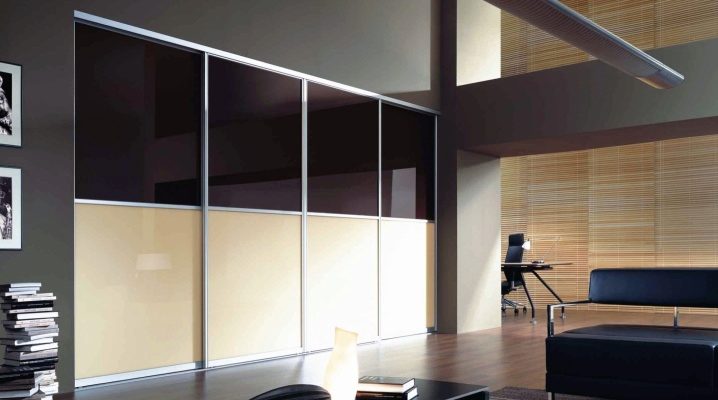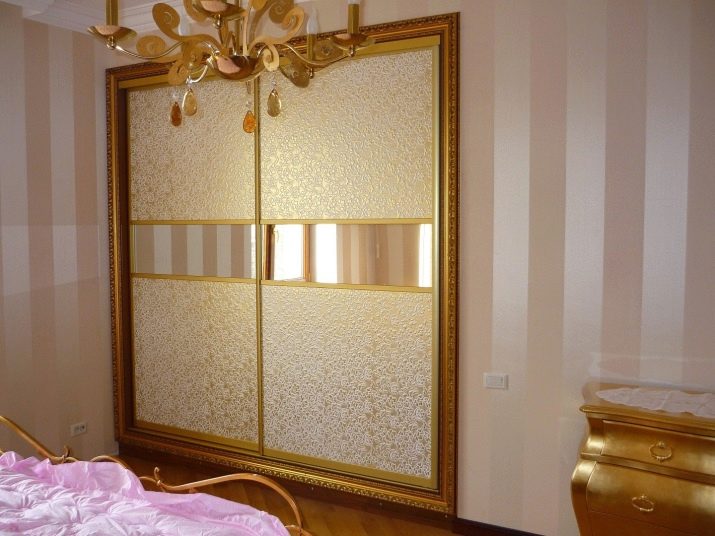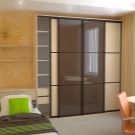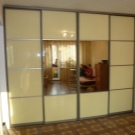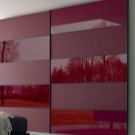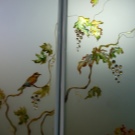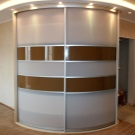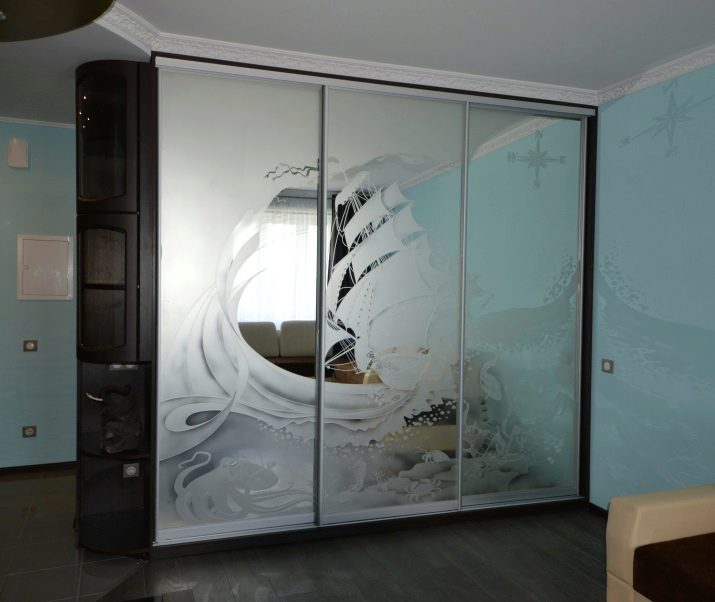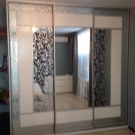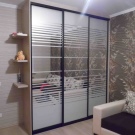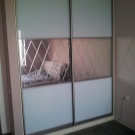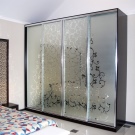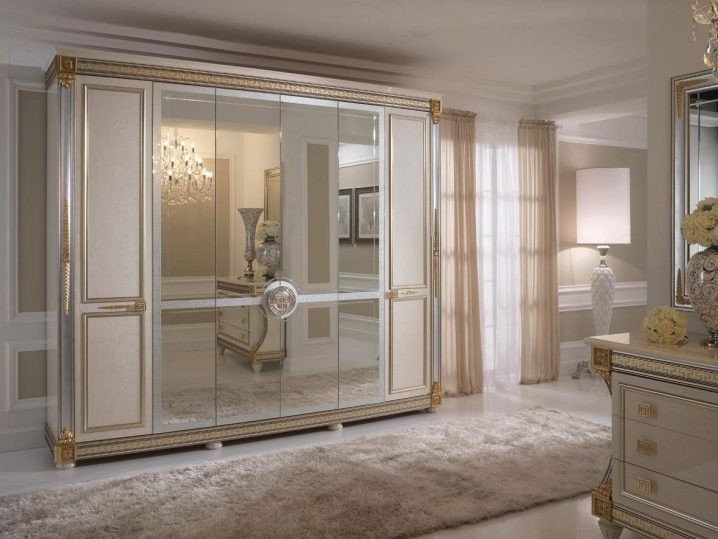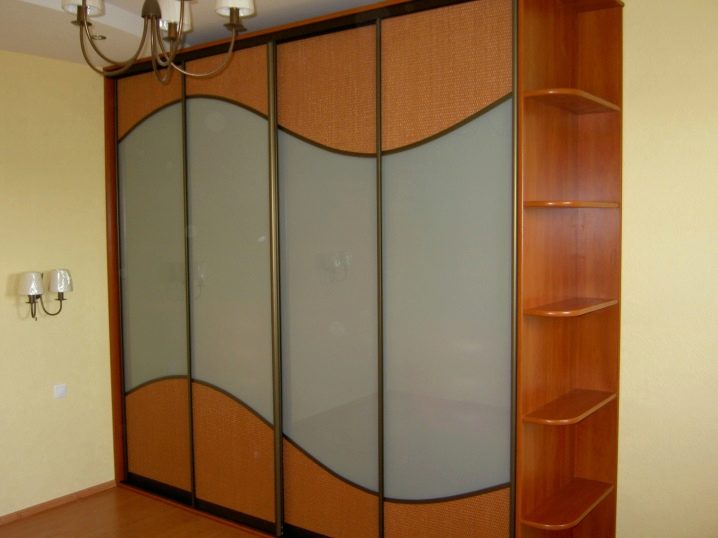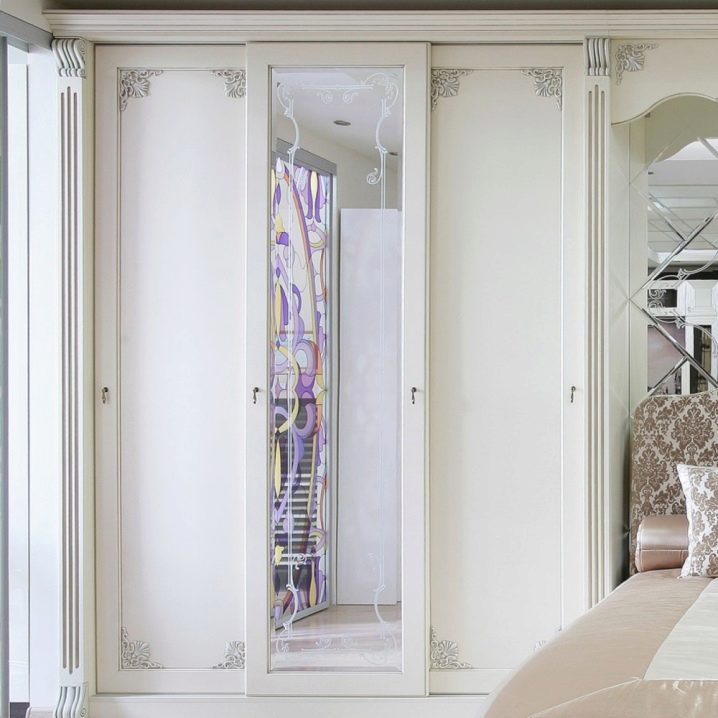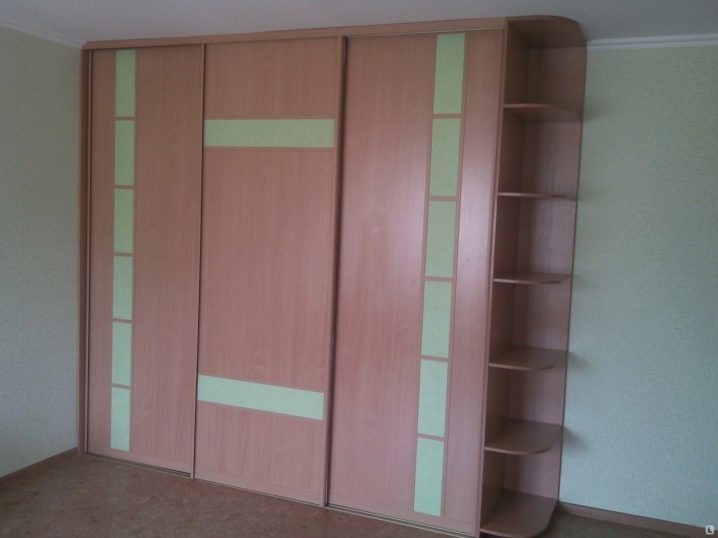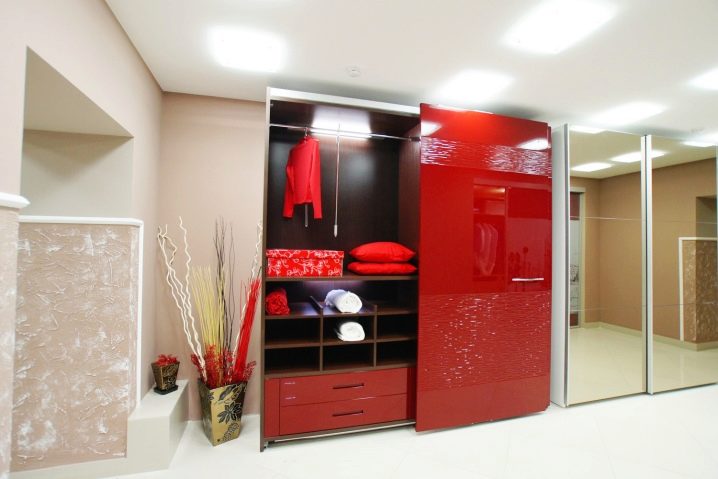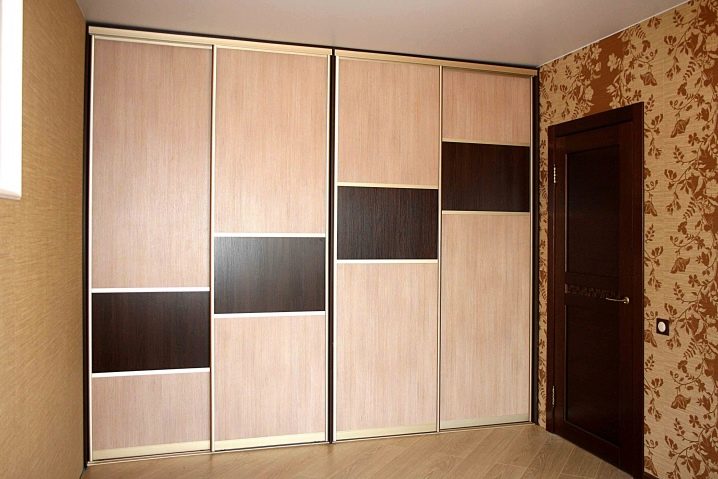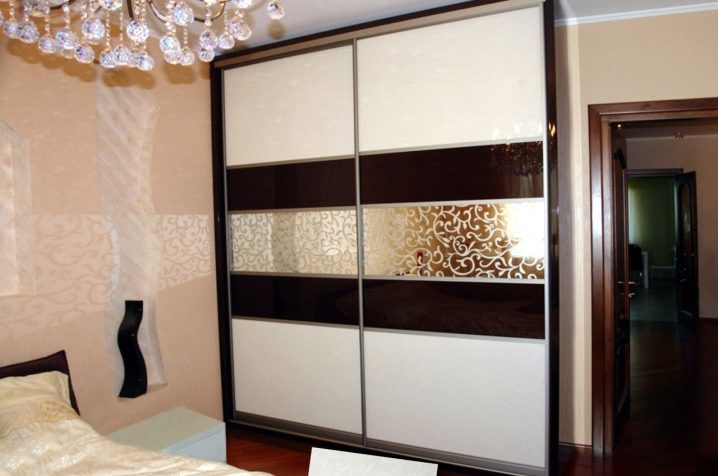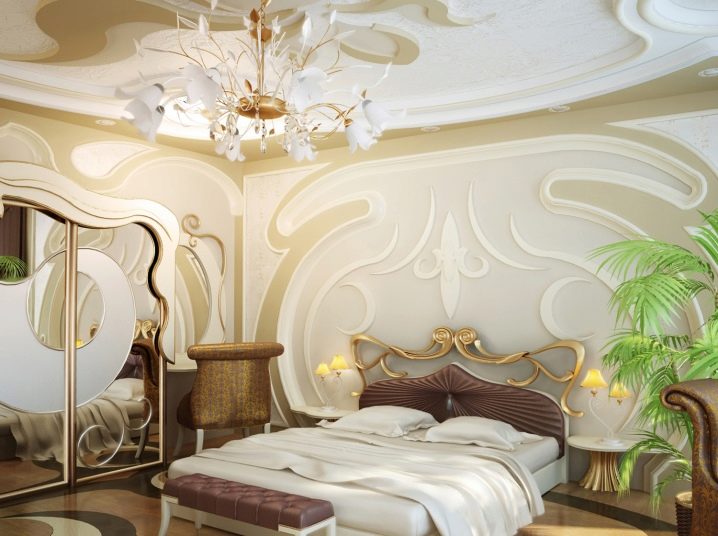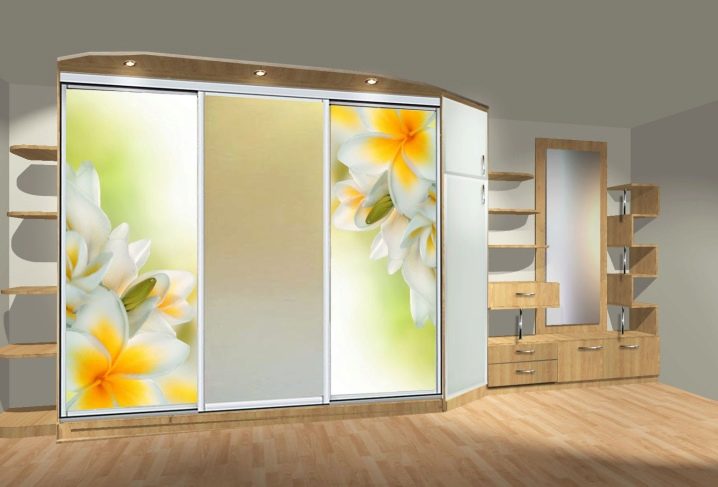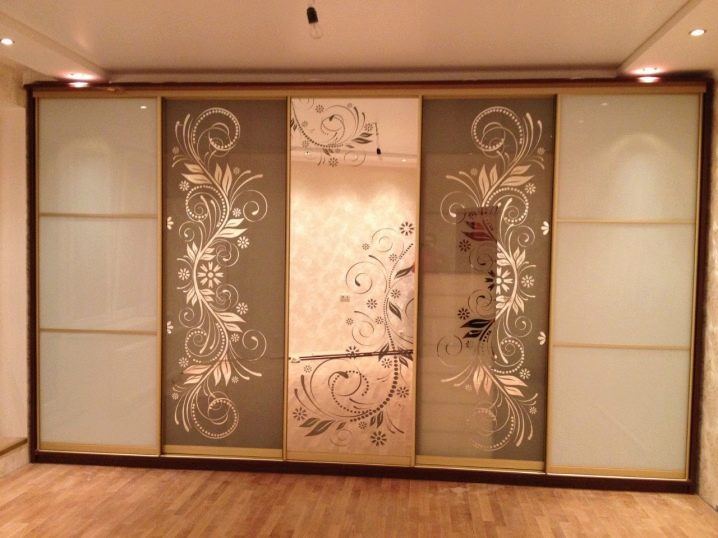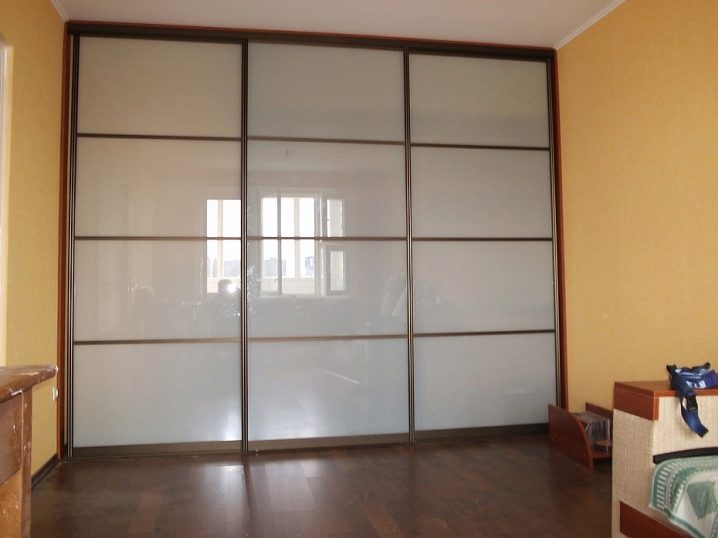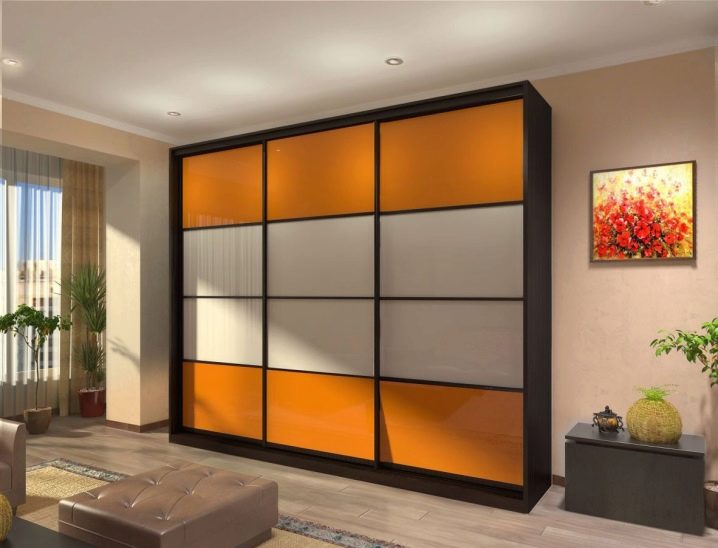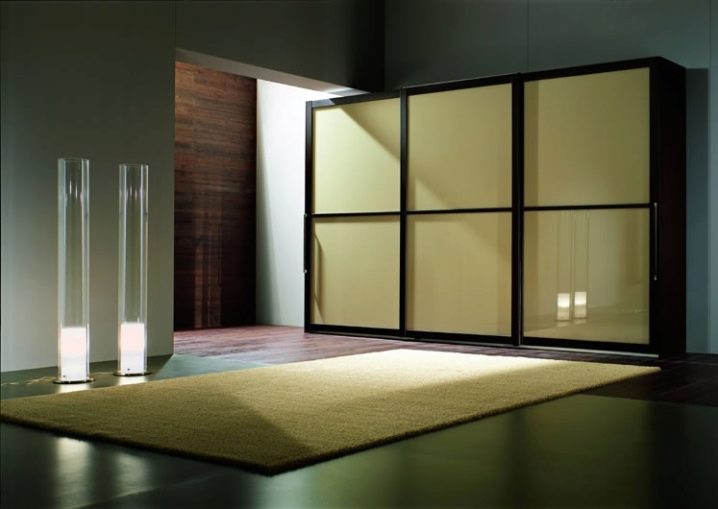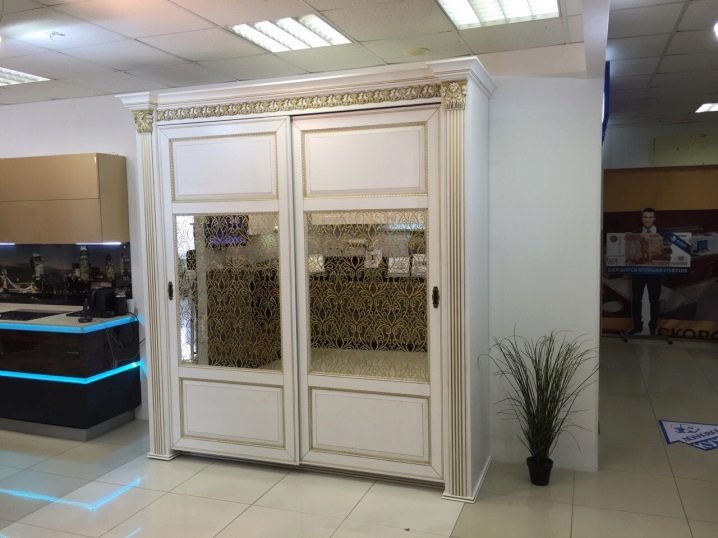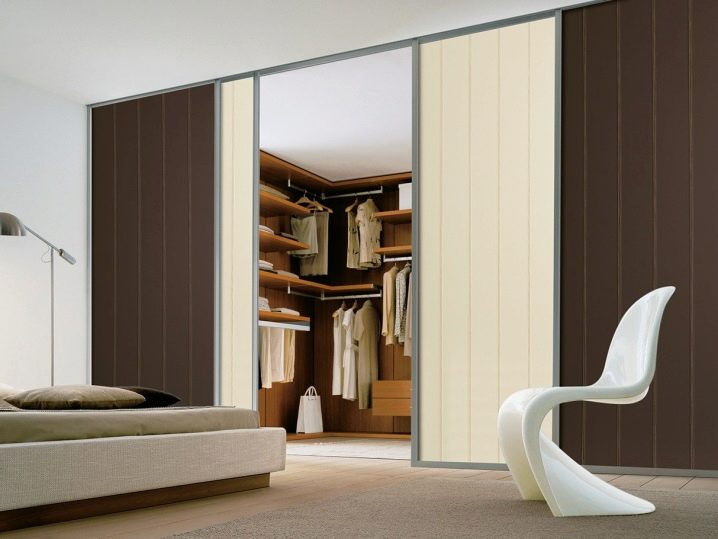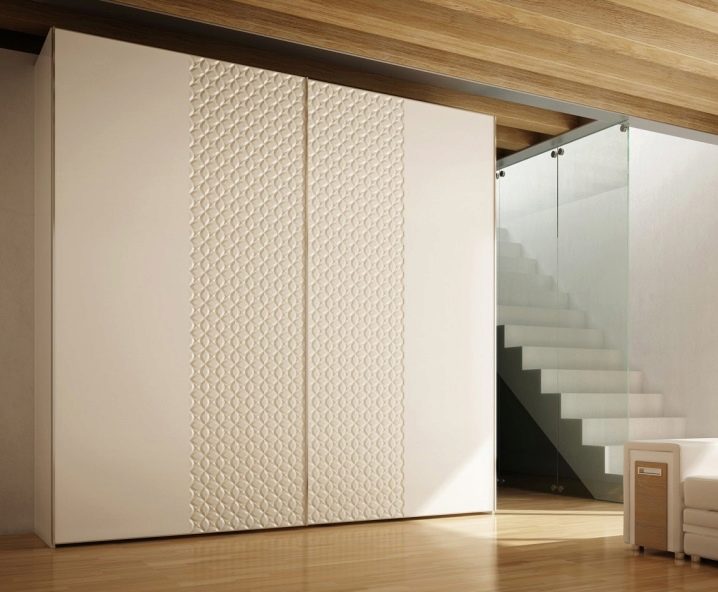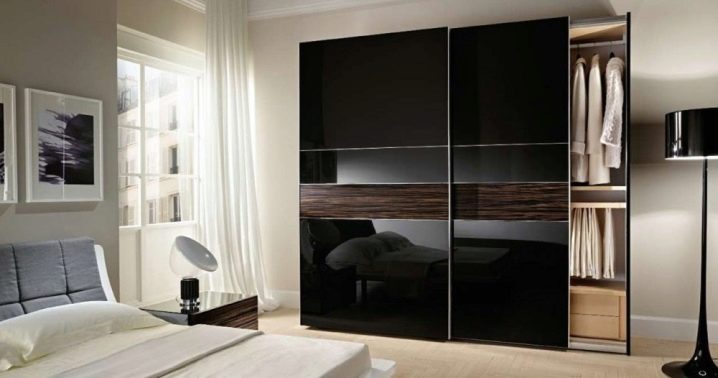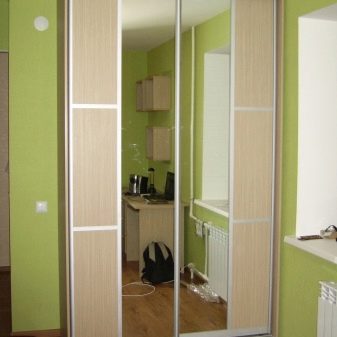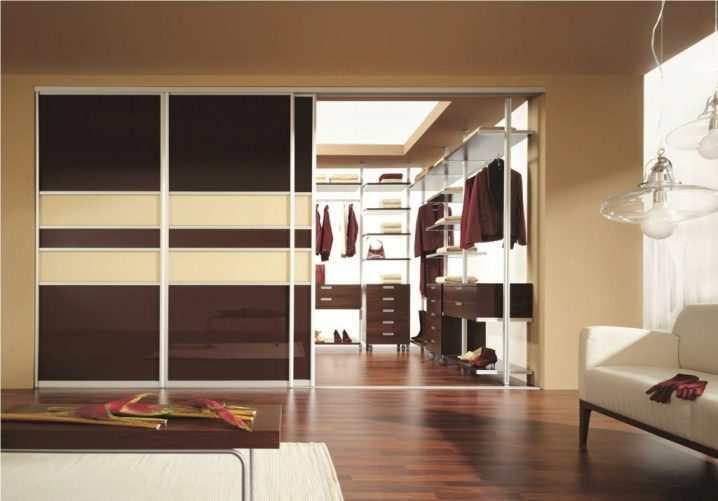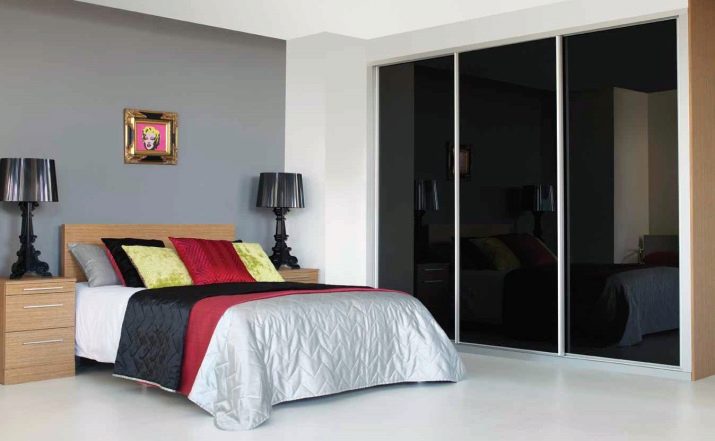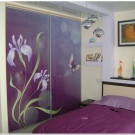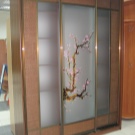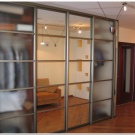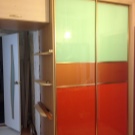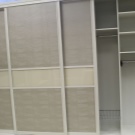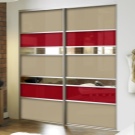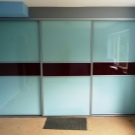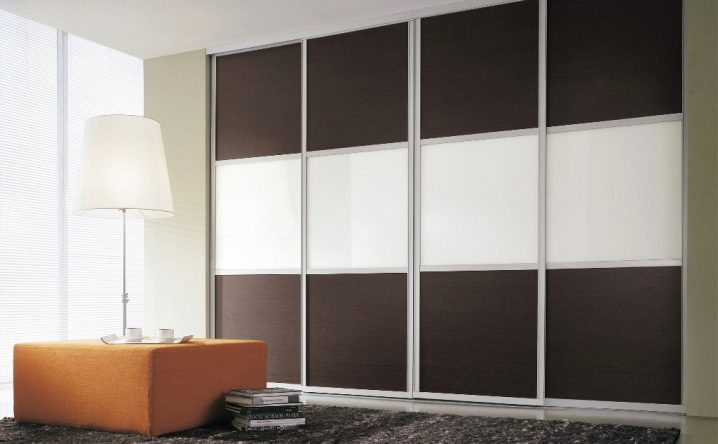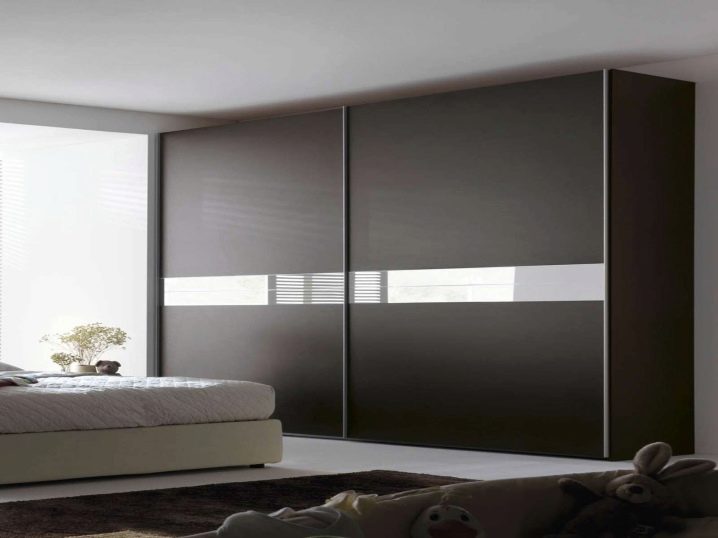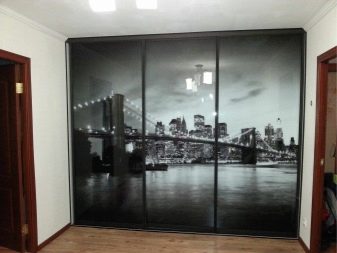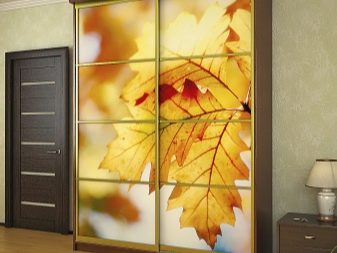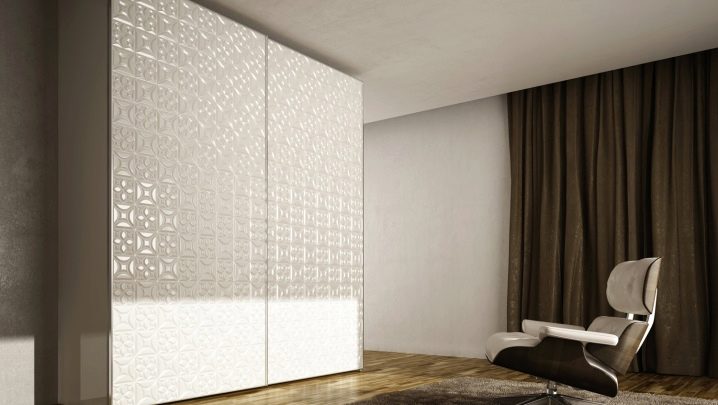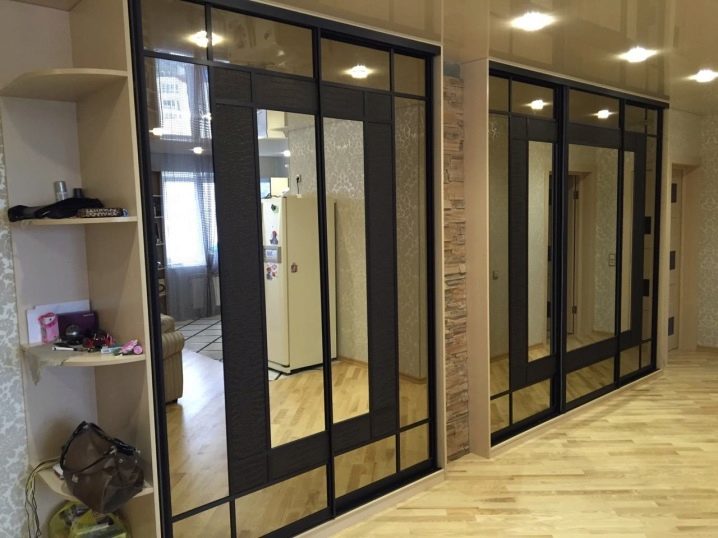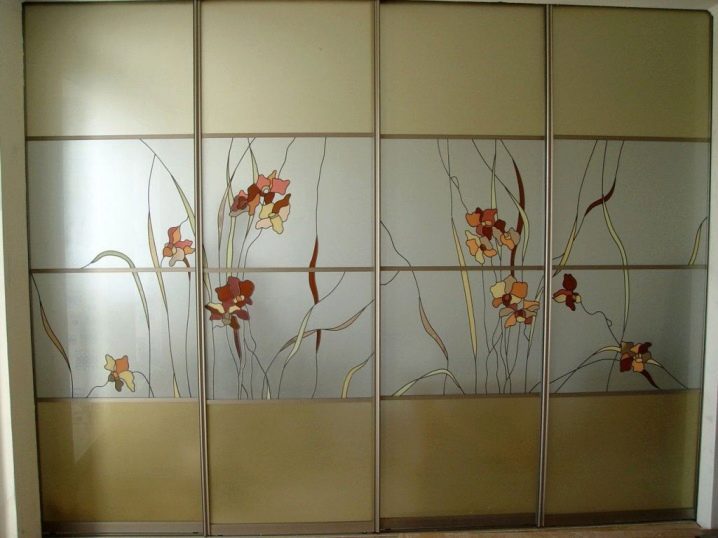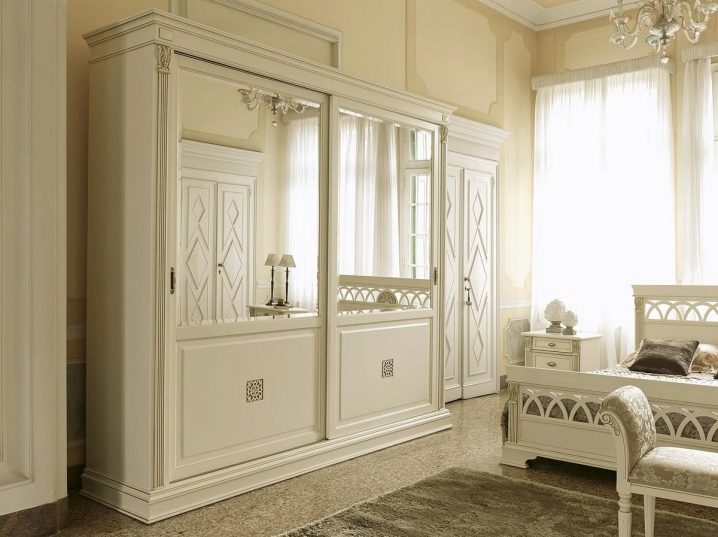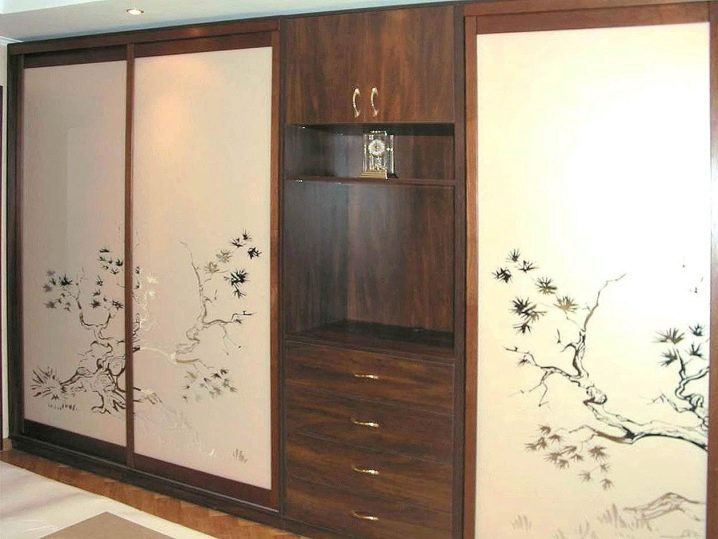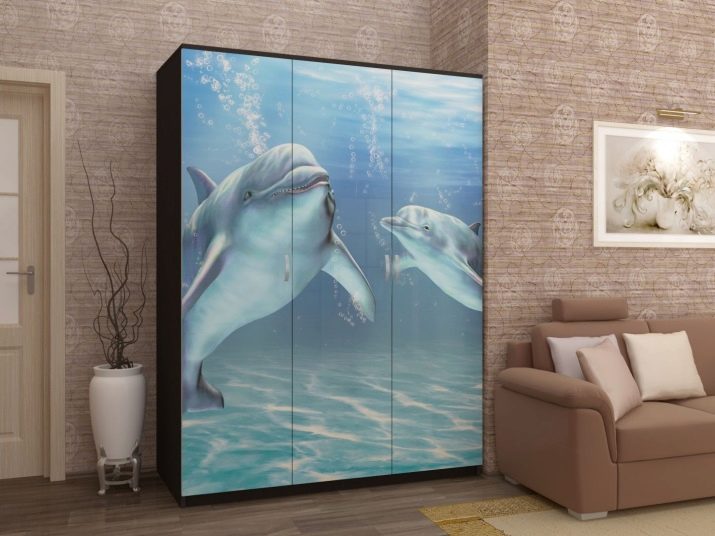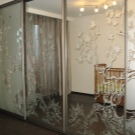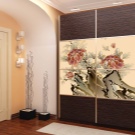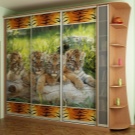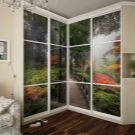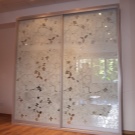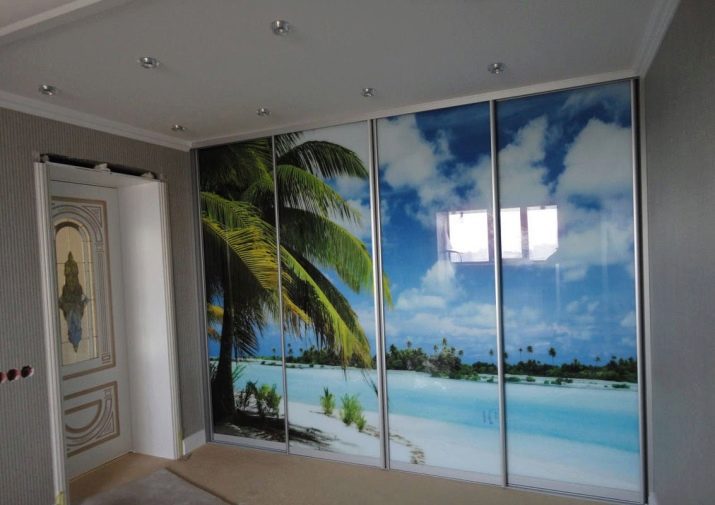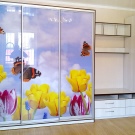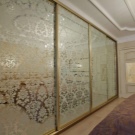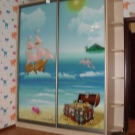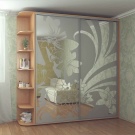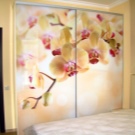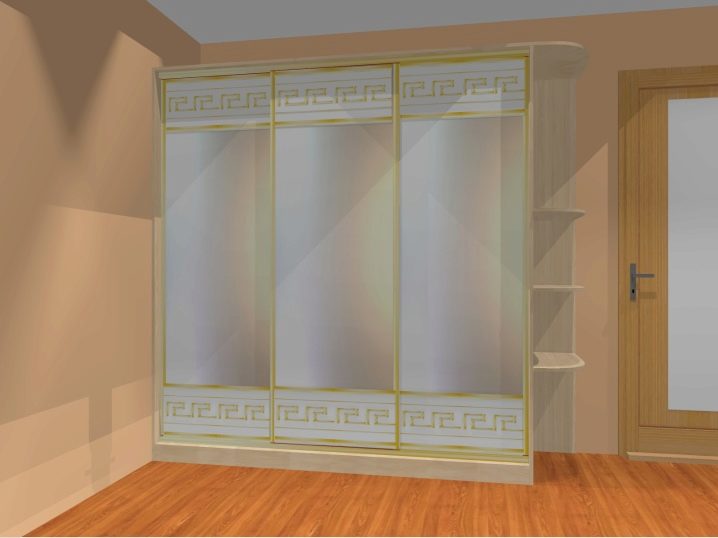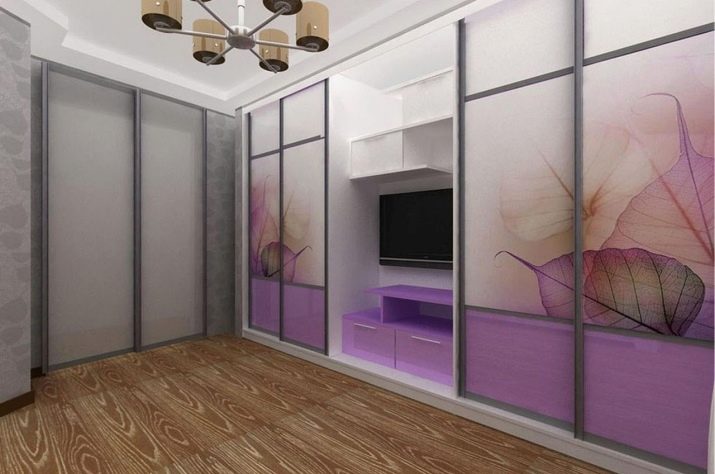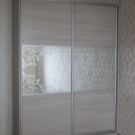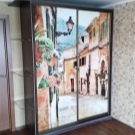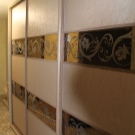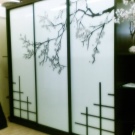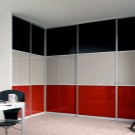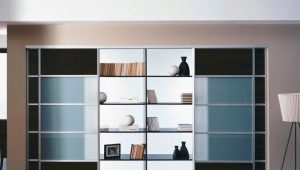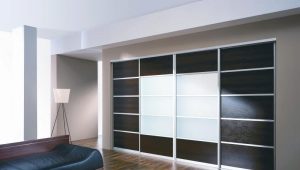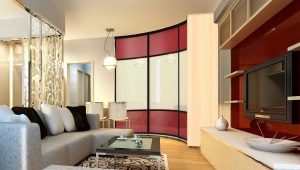Facades of sliding wardrobes
It is difficult to imagine a modern interior without wardrobes. Their overall versatility and standard installation is more than offset by a huge choice of facades. In this article we will give an overview of the most popular options.
Features and benefits
The facade is a door on the front of the product. It is used in almost all furniture products, including wardrobes - they use a sliding type.
Features of such facades:
- Doors can be up to 120 cm wide and even more.
- Save space. It is not required to provide an area for opening the usual swing doors.
- Large capacity. Cabinet volume is used completely.
- Versatility. Suitable for any interior design. Installed in any purpose: bedroom, hallway, living room, nursery, office, pantry.
- Any internal content. Filled by choice. It is completed with shelves, baskets, drawers, ironing board. You can even build a workplace.
- Ability to embed in a bottleneck.
- ZoningWith this cabinet you can successfully divide the room into zones.
- Great design features. Due to the variety of materials, you can install any facades that are ideally suited to your interior.
- Mirror surfaces will help to change the perception of the space of your room. Narrow expand, short lengthen. And the reflectivity of the mirrors will add light where there is not enough, corridors, rooms without windows.
- Reliability. The durability of the mechanism will provide simple steps to check and clean the runners, which move the wheels.
Kinds
Choosing the design of the facades of the cabinet, you need to know that they are deaf, mirror and combined. Combined are convenient in that they allow the creation of a cabinet suitable for the design of the room. Or make it an independent art object.
Combined facades are:
- Classic. Various combinations of deaf and mirror facades.
- Geometric. In this case, the facade consists of rectangles that are decorated with different fillings.
- Diagonal. Here, with the help of profiles, the facade is divided into parts at an angle to each other. Filling parts can be any material.
- Sector. From the name it is clear that the facade is divided into sectors - cells, which are filled in according to the sketch.
- Wave. Curved profiles divide the facade into soft waves. This is a beautiful, but more expensive option, because profiles are made individually.
An interesting solution would be curved facades. They are installed in radial wardrobes. Bent facades are convex, concave and combined. They are made of traditional aluminum frame profiles and filler, which can be curved in shape. Their production requires special skill. Convex and concave shapes of the facades give the cabinets an original style.
Glossy facades are considered the most simple and economical. They are a surface coated with a film of PVC, plastic or acrylic. Cabinets with glossy facades bear the role of the background for other design solutions in the interior.
Materials
The appearance of not only the cabinet, but also the whole room depends on the material used in the manufacture of the facade. Choosing this or that material, you set the style of the whole interior or vice versa, make the construction as inconspicuous as possible.
Chipboard and MDF
Most commonly used. Have a different lining. Chipboard laminated or veneered. Such facades are appropriate if your goal is a relatively discreet interior. But MDF can be painted and applied to the surface drawing or relief. The combination of these two materials will somewhat dilute the rigorous look of the product.
Mirror
Mirror facades are valued because of their unique ability to adjust the room in terms of volume and lighting. To protect the consumer from injury in case of damage to the facade, the mirror is covered with anti-shock film. Thanks to her, the fragments will not scatter on impact. Depending on the design decision, the mirror can be with a silver, emerald, bronze or blue tint. Mirror facades would be appropriate if the focus is not on the cabinet. Thanks to the reflective surface, the design itself becomes "invisible", while repeating the elements of the interior and expanding the space. Perfectly various combinations with facades from a chipboard and MDF look.
Glass
The basis of all glasses - float glass, or polished, smooth, without defects, uniform in thickness.
Its variety is Optivywhite, or clarified, with the maximum light transmission,used for inserts, under enamel, film, photo printing, because provides full color transfer from objects under glass.
Tinted in mass and colored glass get the color when melting due to the addition of metal oxides.
Lakomat-clear glass, covered with a matte varnish. The degree of dullness of glass depends on the type of varnish. The higher the degree of haze, the less visible the contents of the cabinet.
Matelux, or satin - tinted in mass or clear glass, etched with acid. They are translucent and opaque.
Lakobel is the most popular glass. A rich color palette is created by the paint applied to the back surface.
Hybrid Matelux and Lakobel - Matelak, the same float glass, on the one hand color, on the other - matted with acid.
Acrylic glass - the most famous plastic, has an excellent bandwidth for light, is available in a wide color palette. It happens to any degree of transparency and brilliance, as well as different textures. All its advantages include safety, durability. Matt on both sides is particularly resistant to minor damage. Glossy with a smooth surface looks like painted glass.Plexiglass, or mirror acrylic, can be used as mirror inserts.
Natural materials
Bamboo and rattan. Rattan and bamboo plates add a natural, "natural" character to the interior. Rattan is a wicker palm. Bamboo is light and durable, especially appreciated by experts of feng shui.
Natural wood veneer. They have a beautiful texture that conveys patterns of beech, oak, cherry, walnut, etc. These doors look very respectable and give the interior a “expensive” look.
Artificial leather
Accurately imitates natural leather. It has a rich selection of colors. It has strength, softness, resistance to impact, environmental friendliness.
Colors and design
In order for the wardrobe to become a harmonious part of the interior, it is necessary to take into account the colors that are already used in the room. It is better to combine these colors or work in contrast. Do not use in the design of the cabinet more than two colors, especially if the interior contains other colors. Otherwise the room will turn out too saturated in color and will tire.
If you plan a large wardrobe, it is important to distribute the color load throughout the room.
Color inserts, horizontal or vertical stripes, will help to adjust the dimensions of the cabinet relative to the room.
In inexpensive monochrome models, you can use contrasting inserts, the color of which will be supported by other elements of the interior.
The colors are conventionally attributed to two groups: warm and cold. A particular color can affect mood and sensations:
- line from yellow to green have to calm and rest: living room;
- shades of blue have a bed: bedroom;
- blue can significantly reduce mood, cause melancholy;
- purple, on the contrary, can bring peace;
- white can cause a feeling of cold, but will visually increase the furniture;
- red will add energy, but the furniture will make it heavier;
- light shades of gray have to business communication;
- yellow and orange have a high stimulating property;
- pink-lightness, romanticism, often used in bedrooms and bathrooms;
- brown - warm and cozy, has to rest;
- black is elegant, but in large numbers it can be alarming.
The choice of colors for the cabinet is an important issue that must be approached with the utmost seriousness.In order to avoid mistakes, it is better to consult with the designer, who will provide options that are most appropriate to the type of room and interior.
The design of the facades of the wardrobe depends on the choice of material, the method of filling the facades and the color solution. In addition to all sorts of combinations of different materials can be decorated with facades decor. Here are the most popular ways that are now in trend:
Glass sandblasted facades. Are made on the equipment by drawing drawing sandblasting. Sand blasting is a jet of air with quartz sand that is fed under pressure. There are two main options for execution: a matte pattern on a mirror surface or a mirror pattern on a matte surface. At deep drawing when both parties are processed, volume drawing turns out. Of the other methods, we can mention the Amalgam method (the drawing is made on the amalgam of the mirror) and color matting (after applying the pattern with sanding, the matte surface is painted).
Photo printing. In this method of registration, a pattern is applied to the material of filling with special paint.The composition of paint prevents its spreading and provides maximum realism of the picture. A film or varnish is applied on top for protection.
Milling. For milling, MDF and natural veneer are used without pattern. Milling can be end-to-end, superficial, deep. Modern technologies allow to apply drawing of any complexity.
Sliding wardrobe in an interior baguette. If you decide to decorate the facade in a baguette, you will get a wardrobe that will look like a picture in an expensive frame. Baguettes made of extruded polystyrene are covered with a film imitating gilding or stained wood.
Sliding wardrobe with elements fakhverk. This way of decorating imitates its brutal prototype - a house in half-timbered technology.
Design painting on glass, film stained glass, fusing, bevely, batik, fresco - the list of facades can be continued, and it is constantly updated with interesting and unusual novelties. Famous architects and designers such as Pierro Lissoni and Antonio Citterio are often involved in the creation of facade designs for manufacturers.
How to choose
There are some preferences for the installation of certain facades, depending on the room.
Mirror facades and any combinations with them are best suited for the hallway and the hall.
The facade of the closet in the bedroom should be in harmony with the furniture or the headboard. In this case it is better to refuse mirror facades. The colors are preferably pastel or neutral, but not bright, flashy.
A nursery where a small child lives will be appropriate to draw in bright facades and facades with drawings. The main requirements for filling: safety and durability. Wooden facades will also be a good solution.
Build your own hands
If you decide to assemble the door yourself, this step-by-step instruction will help you:
- Order a sliding system on the size of the cabinet opening.
- Install guides. Their dimensions are equal to the width of the cabinet. Need to start with the top rail. The bottom rail must have a depth offset of 20 mm.
- Install the stopper (lock) for tight closing doors.
- Adjust the wardrobe doors using the lower wheel adjusting screw.
- Paste the buffer tape. Buffer tape softens the door against the sidewall and protects the interior from dust.
During operation, some parts will fail.Most problems can be solved independently. Most often, a worn or broken roller needs to be replaced. The easiest way to change the video in the aluminum system. Locate the 2 holes at the bottom end, covered with buffer tape. You need a lower hole. Hexagon unscrew the screw to remove and adjust the roller. Replace.
In steel systems, the roller holds the system at the same time. When unscrewing the screw, it is necessary to ensure that the profiles do not diverge.
To replace the cloths, you need to loosen the screws in the aluminum systems at the ends, and remove the rollers in the steel ones. New canvas of the desired size to insert and secure profiles. If the glass is glass, be sure to replace the seal. More difficult repair is better for making to the expert.
